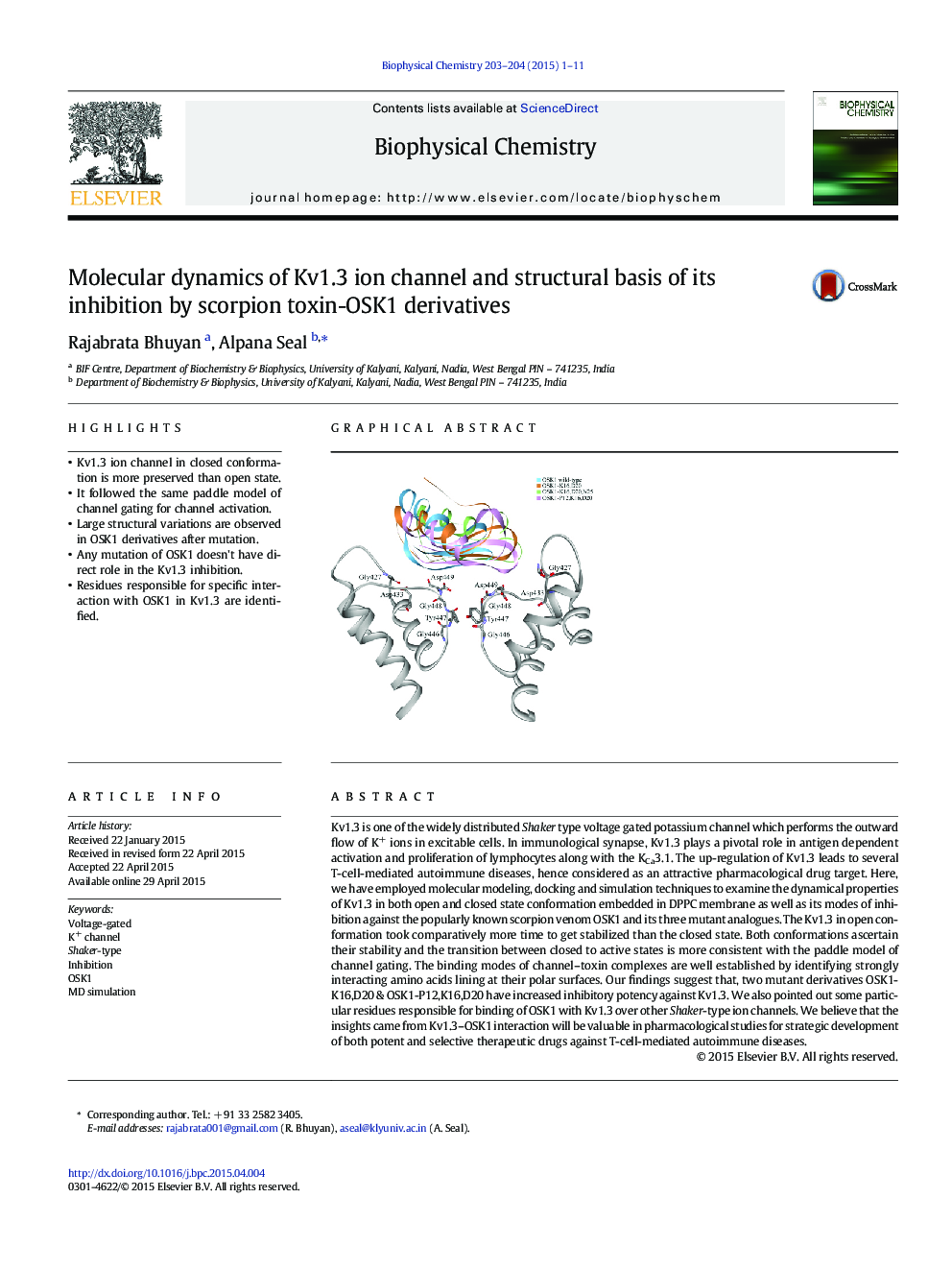| Article ID | Journal | Published Year | Pages | File Type |
|---|---|---|---|---|
| 5370785 | Biophysical Chemistry | 2015 | 11 Pages |
â¢Kv1.3 ion channel in closed conformation is more preserved than open state.â¢It followed the same paddle model of channel gating for channel activation.â¢Large structural variations are observed in OSK1 derivatives after mutation.â¢Any mutation of OSK1 doesn't have direct role in the Kv1.3 inhibition.â¢Residues responsible for specific interaction with OSK1 in Kv1.3 are identified.
Kv1.3 is one of the widely distributed Shaker type voltage gated potassium channel which performs the outward flow of K+ ions in excitable cells. In immunological synapse, Kv1.3 plays a pivotal role in antigen dependent activation and proliferation of lymphocytes along with the KCa3.1. The up-regulation of Kv1.3 leads to several T-cell-mediated autoimmune diseases, hence considered as an attractive pharmacological drug target. Here, we have employed molecular modeling, docking and simulation techniques to examine the dynamical properties of Kv1.3 in both open and closed state conformation embedded in DPPC membrane as well as its modes of inhibition against the popularly known scorpion venom OSK1 and its three mutant analogues. The Kv1.3 in open conformation took comparatively more time to get stabilized than the closed state. Both conformations ascertain their stability and the transition between closed to active states is more consistent with the paddle model of channel gating. The binding modes of channel-toxin complexes are well established by identifying strongly interacting amino acids lining at their polar surfaces. Our findings suggest that, two mutant derivatives OSK1-K16,D20 & OSK1-P12,K16,D20 have increased inhibitory potency against Kv1.3. We also pointed out some particular residues responsible for binding of OSK1 with Kv1.3 over other Shaker-type ion channels. We believe that the insights came from Kv1.3-OSK1 interaction will be valuable in pharmacological studies for strategic development of both potent and selective therapeutic drugs against T-cell-mediated autoimmune diseases.
Graphical abstractDownload high-res image (162KB)Download full-size image
